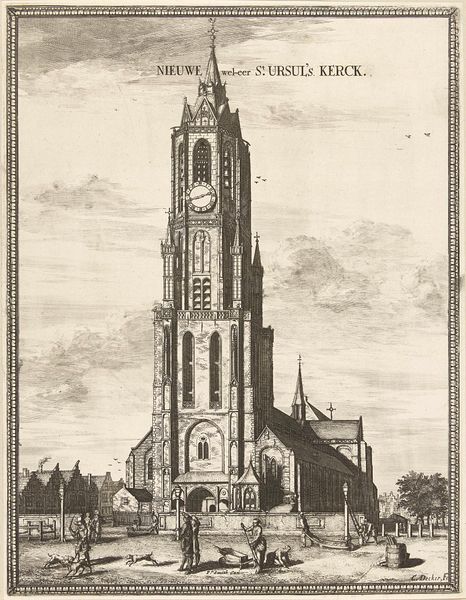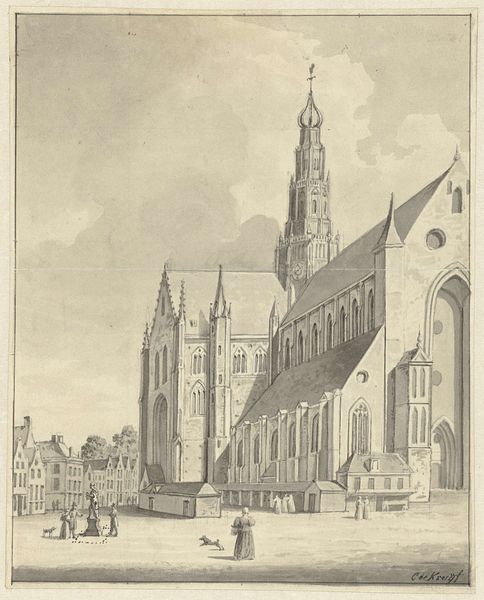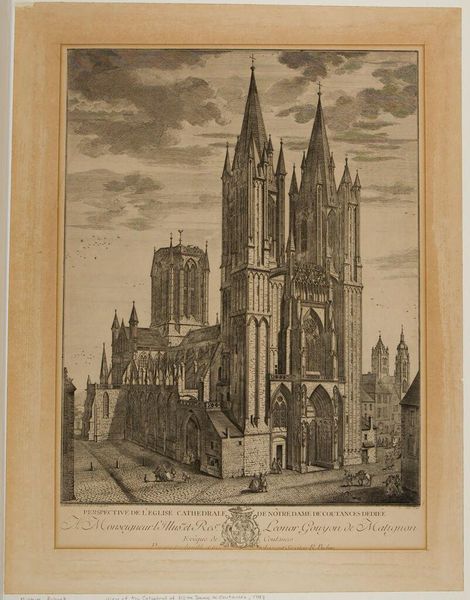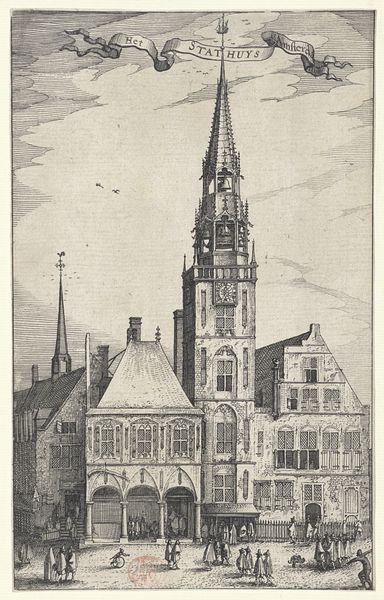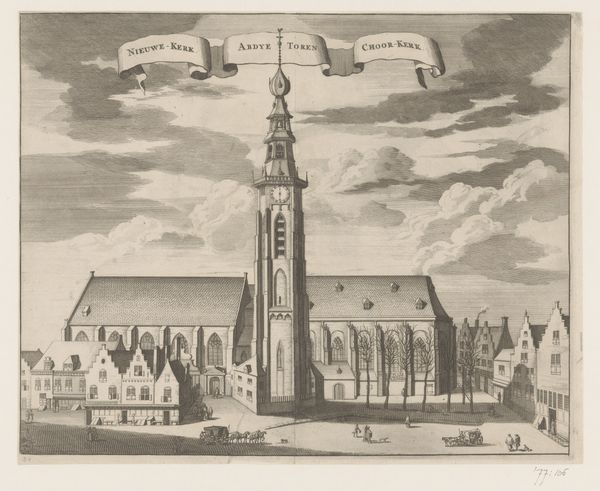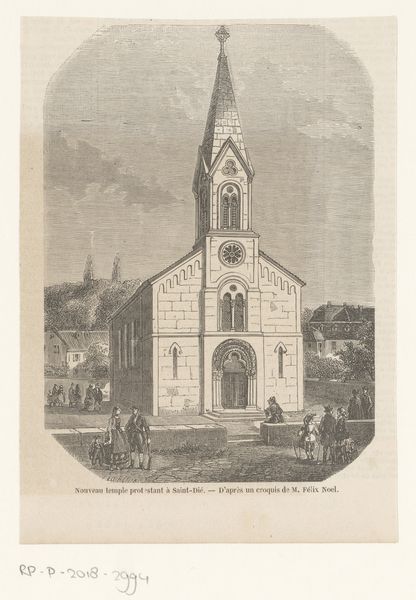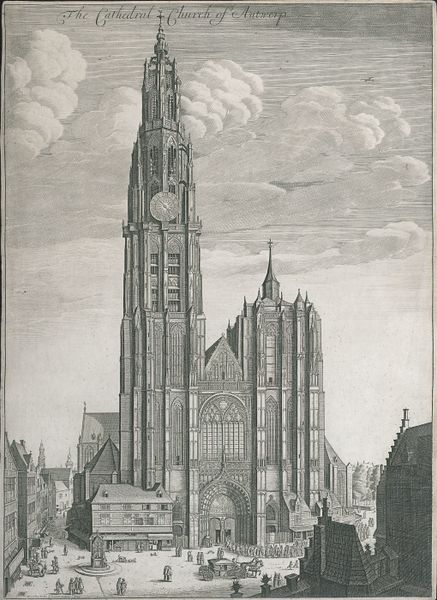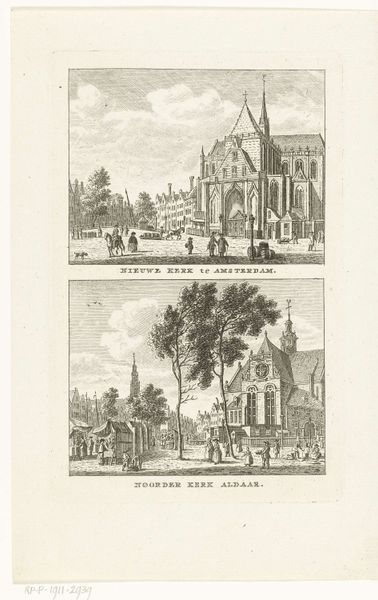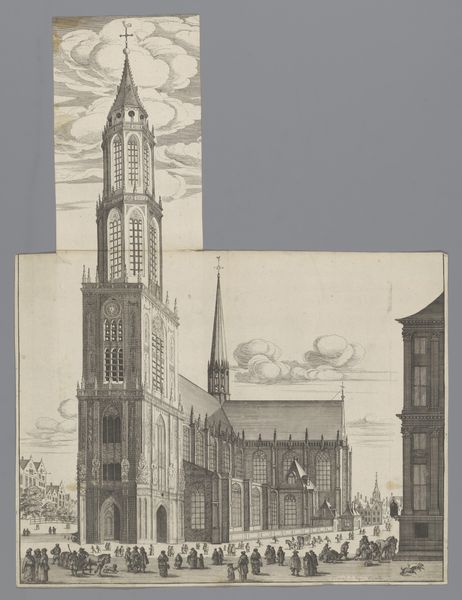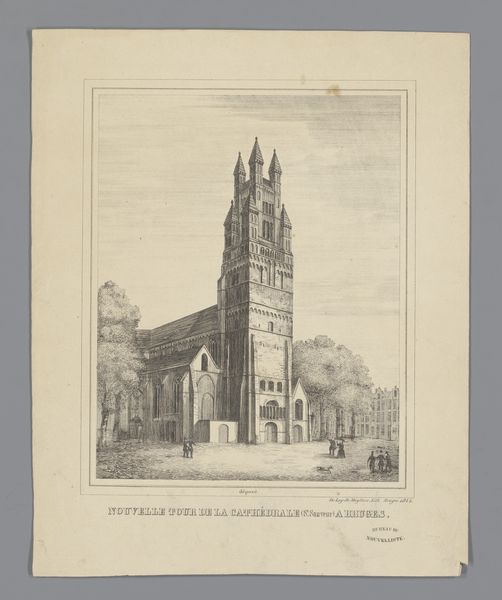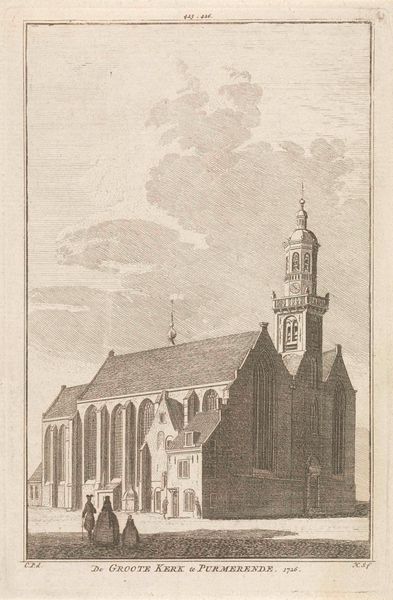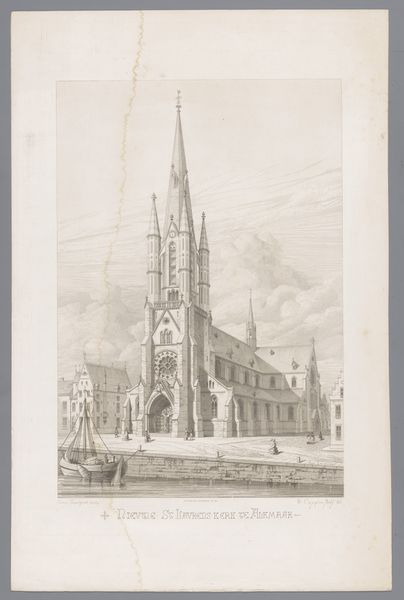
Oude wel-eer St. Hypolituskerk Oude Kerk (St. Hypolituskerk) in Delft
0:00
0:00
drawing, print, engraving, architecture
#
drawing
#
baroque
#
dutch-golden-age
# print
#
historic architecture
#
traditional architecture
#
cityscape
#
engraving
#
architecture
Copyright: Rijks Museum: Open Domain
Curator: Here we have an engraving by Coenraet Decker, depicting the Oude Kerk in Delft. Its proper title is, "Oude wel-eer St. Hypolituskerk Oude Kerk (St. Hypolituskerk) in Delft". Editor: My initial impression is of somber grandeur. The stark lines of the engraving emphasize the building's monumental scale and create a sense of timelessness. The detail is phenomenal. Curator: The work showcases not just architectural detail, but the role of the church in daily life. Observe the figures populating the foreground – a blend of classes perhaps? Note the posture of the person on horseback, for example. Editor: The interplay of light and shadow adds to the three-dimensionality, but I also think it invites symbolic reading, casting certain architectural features into greater relief. What do you make of the way the tower dominates the composition? Curator: Towers in Dutch Golden Age cityscapes are often visual declarations of civic pride, but religious architecture carries its own set of established interpretations and societal role within the urban sphere. They broadcast societal power but, here specifically, God's reach within the municipality. Editor: It's interesting how the rigid structure of the building contrasts with the organic, flowing clouds in the sky. The lines of the engraving in those areas provide such textural contrast to all the measured space. Curator: Decker was working at a time of great societal and economic transition for the Netherlands, remember. Religious structures, in art and life, offered not just solace, but a visible connection to the past in a rapidly evolving present. A symbol of hope but equally of potential contention during the Reformation. Editor: You've contextualized its creation adeptly. It certainly does have that layered depth, looking at it again. Curator: It is a piece that invites one to reflect on how sacred spaces shape, and are shaped by, the societies that construct and inhabit them. Editor: A final reflection on my part focuses on the engraving medium, capable of incredible linear detail which brings its own form of intense, intellectual visual pleasure to the careful observer.
Comments
No comments
Be the first to comment and join the conversation on the ultimate creative platform.
